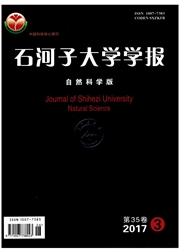

 中文摘要:
中文摘要:
AIM: To investigate role of putative mitogen-activated protein kinase activator with WD40 repeats (MAWD)/ MAWD binding protein (MAWBP) in gastric cancer (GC). METHODS: MAWBP and MAWD mRNA expression level was examined by real-time reverse transcriptasepolymerase chain reaction and semi-quantitative polymerase chain reaction in six GC cell lines. Western blotting was used to examine the protein expression levels. We developed GC cells that stably overexpressed MAWBP and MAWD, and downregulated expression by RNA interference assay. Proliferation and migration of these GC cells were analyzed by 3-(4,5-dimethyl2-thiazolyl)-2,5-diphenyl tetrazolium bromide (MTT), soft agar, tumorigenicity, migration and transwell assays. The effect of expression of MAWBP and MAWD on transforming growth factor (TGF)-β1-induced epithelialmesenchymal transition (EMT) was examined by transfection of MAWBP and MAWD into GC cells. We detected the levels of EMT markers E-cadherin, N-cadherin and Snail in GC cells overexpressing MAWBP and MAWD by Western blotting. The effect of MAWBP and MAWD on TGF-β signal was detected by analysis of phosphorylation level and nuclear translocation of Smad3 using Western blotting and immunofluorescence. RESULTS: Among the GC cell lines, expression of endogenous MAWBP and MAWD was lowest in SGC7901 cells and highest in BGC823 cells. MAWBP and MAWD were stably overexpressed in SGC7901 cells and knocked down in BGC823 cells. MAWBP and MAWD inhibited GC cell proliferation in vitro and in vivo . MTT assay showed that overexpression of MAWBP and MAWD suppressed growth of SGC7901 cells (P 【 0.001), while knockdown of these genes promoted growth of BGC823 cells (P 【 0.001). Soft agar colony formation experiments showed that overexpression of MAWBP and MAWD alone or together reduced colony formation compared with vector group in SGC7901 (86.25±8.43, 12.75±4.49, 30±6.41 vs 336.75±22.55, P 【 0.001), and knocked-down MAWBP and MAWD demonstrated opposite effects (131.25±16.54, 88.75±11.12, 341.75±22.23
 英文摘要:
英文摘要:
AIM: To investigate role of putative mitogen-activated protein kinase activator with WD40 repeats (MAWD)/MAWD binding protein (MAWBP) in gastric cancer (GC). METHODS: MAWBP and MAWD mRNA expression level was examined by real-time reverse transcriptase-polymerase chain reaction and semi-quantitative polymerase chain reaction in six GC cell lines. Western blotting was used to examine the protein expression levels. We developed GC cells that stably overexpressed MAWBP and MAWD, and downregulated expression by RNA interference assay. Proliferation and migration of these GC cells were analyzed by 3-(4,5-dimethyl-2-thiazolyl)-2,5-diphenyl tetrazolium bromide (MTT), soft agar, tumorigenicity, migration and transwell assays. The effect of expression of MAWBP and MAWD on transforming growth factor (TGF)-β1-induced epithelial-mesenchymal transition (EMT) was examined by transfection of MAWBP and MAWD into GC cells. We detected the levels of EMT markers E-cadherin, N-cadherin and Snail in GC cells overexpressing MAWBP and MAWD by Western blotting. The effect of MAWBP and MAWD on TGF-β signal was detected by analysis of phosphorylation level and nuclear translocation of Smad3 using Western blotting and immunofluorescence. RESULTS: Among the GC cell lines, expression of endogenous MAWBP and MAWD was lowest in SGC7901 cells and highest in BGC823 cells. MAWBP and MAWD were stably overexpressed in SGC7901 cells and knocked down in BGC823 cells. MAWBP and MAWD inhibited GC cell proliferation in vitro and in vivo. MTT assay showed that overexpression of MAWBP and MAWD suppressed growth of SGC7901 cells (P < 0.001), while knockdown of these genes promoted growth of BGC823 cells (P < 0.001). Soft agar colony formation experiments showed that overexpression of MAWBP and MAWD alone or together reduced colony formation compared with vector group in SGC7901 (86.25 ± 8.43, 12.75 ± 4.49, 30 ± 6.41 vs 336.75 ± 22.55, P < 0.001), and knocked-down MAWBP and MAWD demonstrated opposite effects (131.25 ± 16.54, 88.75 ± 11.12, 341.75 ?
 同期刊论文项目
同期刊论文项目
 同项目期刊论文
同项目期刊论文
 期刊信息
期刊信息
